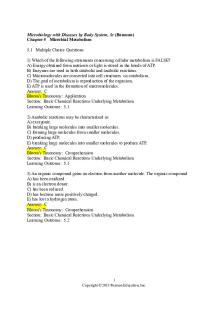Chapter 5 PDF

| Title | Chapter 5 |
|---|---|
| Author | Jasmine Nguyen |
| Course | Psychology 14 |
| Institution | De Anza College |
| Pages | 2 |
| File Size | 50.2 KB |
| File Type | |
| Total Downloads | 76 |
| Total Views | 166 |
Summary
fifth chapter of mindtap definitions...
Description
cephalocaudal principle concept that growth proceeds from the head to the tail orthogenetic principle concept that development proceeds from global and undifferentiated states toward differentiated and integrated patterns of response proximodistal principle concept that growth proceeds from the center of the body to the extremities celiac disease inherited digestive problem in which gluten triggers an immune response that damages a person's small intestine catch-up growth phenomenon whereby children who have experienced growth deficits grow rapidly and resume their genetically-programmed growth trajectory endocrine gland type of gland that secretes chemicals called hormones directly into the bloodstream pituitary gland “master gland” at the base of the brain that regulates other glands and produces growth hormone growth hormone hormone that stimulates childhood physical growth and the adolescent growth spurt androgens male hormone that helps trigger the adolescent growth spurt and development of male sex organs estrogen female hormone responsible for the development of the breasts, female sex organs, and secondary sex characteristics neuron nerve cell synapse point at which the axon or dendrite of one neuron makes a connection with another neuron myelination depositing of fatty sheath around neural axons that insulates them and speeds transmission of neural impulses synaptogenesis growth of connections between neurons synaptic pruning removal of unnecessary connections between neurons in response to experience reflex unlearned and automatic response to a stimulus congenital malformation defect present at birth that is caused by genetic factors, prenatal events, or both lateralization specialization of the two hemispheres of the cerebral cortex of the brain puberty period of biological change that results in an individual's attaining sexual maturity chronic traumatic encephalopathy (CTE) degenerative brain disease with symptoms of memory loss, poor impulse control, depression, and eventually dementia
menarche female's first menstrual period semenarche boy's first ejaculation metabolic syndrome (MeTS) combination of risk factors that can lead to heart disease neurogenesis process of generating new neurons across the life span menopause ending of a woman's menstrual periods and reproductive capacity around age 51 hormone replacement therapy (HRT) use of estrogen and progestin to compensate for loss of natural regulatory substances due to menopause reserve capacity ability of many organ systems to respond to demands for extraordinary output programmed theories of aging set of concepts that emphasize the systematic genetic control of aging processes error (damage) theories of aging proposal that haphazard processes cause destruction in cells to accumulate and organ systems to deteriorate maximum life span ceiling on the number of years that any member of a species lives; 120 years for humans centenarian individual who lives to be 100 years of age Hayflick limit estimate that human cells can double only 50 times, plus/minus 10, and then will die telomere stretch of DNA forming the tip of a chromosome that shortens after each cell division free radical chemically-unstable byproduct of metabolism that reacts with other molecules to produce toxic substances that damage cells...
Similar Free PDFs

Chapter 5 quiz #5
- 2 Pages

5 - chapter 5
- 3 Pages

5 - chapter 5
- 4 Pages

Chapter 5
- 19 Pages

Chapter 5
- 23 Pages

Chapter 5
- 106 Pages

Chapter 5
- 4 Pages

Chapter 5
- 2 Pages

Chapter 5
- 70 Pages

Chapter 5
- 27 Pages

Chapter 5
- 39 Pages

Chapter 5
- 15 Pages

Chapter 5
- 21 Pages

Chapter 5
- 41 Pages

Chapter 5
- 5 Pages

Chapter 5
- 16 Pages
Popular Institutions
- Tinajero National High School - Annex
- Politeknik Caltex Riau
- Yokohama City University
- SGT University
- University of Al-Qadisiyah
- Divine Word College of Vigan
- Techniek College Rotterdam
- Universidade de Santiago
- Universiti Teknologi MARA Cawangan Johor Kampus Pasir Gudang
- Poltekkes Kemenkes Yogyakarta
- Baguio City National High School
- Colegio san marcos
- preparatoria uno
- Centro de Bachillerato Tecnológico Industrial y de Servicios No. 107
- Dalian Maritime University
- Quang Trung Secondary School
- Colegio Tecnológico en Informática
- Corporación Regional de Educación Superior
- Grupo CEDVA
- Dar Al Uloom University
- Centro de Estudios Preuniversitarios de la Universidad Nacional de Ingeniería
- 上智大学
- Aakash International School, Nuna Majara
- San Felipe Neri Catholic School
- Kang Chiao International School - New Taipei City
- Misamis Occidental National High School
- Institución Educativa Escuela Normal Juan Ladrilleros
- Kolehiyo ng Pantukan
- Batanes State College
- Instituto Continental
- Sekolah Menengah Kejuruan Kesehatan Kaltara (Tarakan)
- Colegio de La Inmaculada Concepcion - Cebu